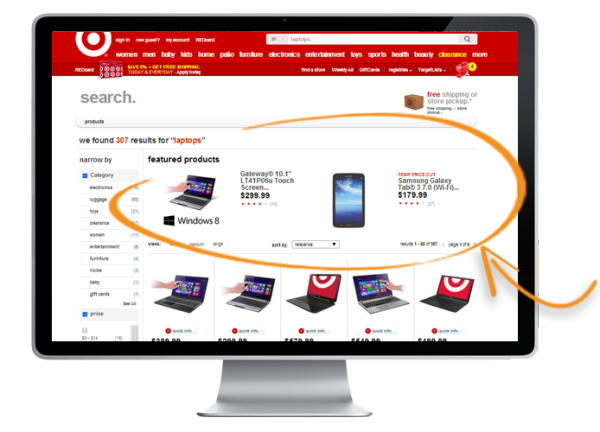The New Shopper Marketing Paradigm, Part 2: Measuring Impact For Product Brands
Consumer product marketers have long had to operate under the assumption that direct sales attribution, while an ultimate goal, is largely unobtainable and that marketing success must be judged through predictive modeling and sophisticated estimation. The exception is when brands decide to operate their own stores or ecommerce sites, where they can use and measure […]
Consumer product marketers have long had to operate under the assumption that direct sales attribution, while an ultimate goal, is largely unobtainable and that marketing success must be judged through predictive modeling and sophisticated estimation.
The exception is when brands decide to operate their own stores or ecommerce sites, where they can use and measure direct response tactics to drive traffic and purchases.
However, the vast majority of product brands either do not have their own stores, or they operate a small ecommerce site that serves as the brand backbone but carefully avoids competing with key retail channels.
We work with hundreds of product brands that describe their previous challenges of buying digital advertising without a clear attribution path to measure success. Many brands have historically spent money to drive traffic to their “brand.com” website with content about products, but no “add to cart” button. They have to rely on soft measures — such as dwell time on the site or a click on a “where to buy” button that sends traffic to a selection of retailers — with complex models to predict which of those interactions drove eventual purchases.
Other brands buy various digital media and send users directly to their product pages at online retailers, one step closer to purchase than brand.com. But most retailers still don’t share whether that traffic converted into sales of the respective products — or if they do, the data is rarely comparable across retailers or attributable to specific consumer segments to allow for campaign optimization.
This lack of transparency and clear attribution data is a severe hindrance to brands increasing their investment in online marketing vehicles, which can deliver the desired goals of both brand exposure and sales results.
Most brands are seeing degraded effectiveness of many formerly tried-and-true offline campaign tactics (who still shops using newspaper circulars?), but investing more in digital can feel like a huge black hole, with thousands of options and few direct corollaries to proven offline methods.
Sales Attribution
We took this into account in creating our Retail Search Exchange — we partnered with large retailers to provide their direct attribution data while protecting their proprietary data by sharing it only in the aggregate. While I recognize brands ideally would like to see retailer-specific data, the upside of this approach (beyond actually getting attribution and transparency), is that it also standardizes the data by a common methodology across all retailers in the network.

As a result, product brands from Lysol to LEGO now have an option to spend $1,000 and see the unit and monetary sales that resulted. So if $10,000 in sales resulted, they would see 1,000%, or 10 times, Return on Advertising Spend (ROAS).
Most direct marketers with clear purchase or signup goals, such as retailers or service providers like Netflix, build their entire marketing strategy around achieving volume goals at a target ROAS. Product brands can now do the same — and not based on estimates or long-term studies, but rather on real-time reporting of actual sales.
First Moment Of Truth Exists Online
In 2005, Procter & Gamble coined the term “First Moment of Truth” to explain the importance of the store shelf in the customer decision process. According to P&G, “the three to seven seconds when someone notices an item on a store shelf” is all it takes for shoppers to make up their mind about a product.
The First Moment of Truth actually still applies online. The digital corollary is when a customer visits the product detail page of an online retailer.
Product detail pages are where all of the information about a product is available — description, pictures pricing, options, reviews, specifications, demos, videos, etc. Visiting a product detail page online is like picking up a product off a store shelf and suddenly having a multimedia presentation leap up into the air and start selling you the product.

Each visit is like a virtual swing of the bat for a brand to pitch and sell its product. The more visits a brand has, the more products it is likely to sell. The more visits relative to competitors a brand has, the more likely a brand is to increase market share. Amazon preaches this; Walmart preaches this; we preach this.
Are there any cases where driving more visits to product detail pages won’t help sales? Yes — when the traffic driven to the page is of low quality (for example, having been deceived into clicking there), or when the product content doesn’t appear to be competitive to other offerings.
The most forward-thinking brands have focused huge efforts on making their products attractive on the digital shelf, stimulating customer reviews, producing and syndicating rich content and imagery to strengthen their brand assets, and reacting quickly to competitive pricing and promotions.
These activities increase the probability of closing sales. Brands that focus on strong content combined with aggressive traffic-driving strategies sell more products. Period.
Contributing authors are invited to create content for MarTech and are chosen for their expertise and contribution to the search community. Our contributors work under the oversight of the editorial staff and contributions are checked for quality and relevance to our readers. MarTech is owned by Semrush. Contributor was not asked to make any direct or indirect mentions of Semrush. The opinions they express are their own.
Related stories